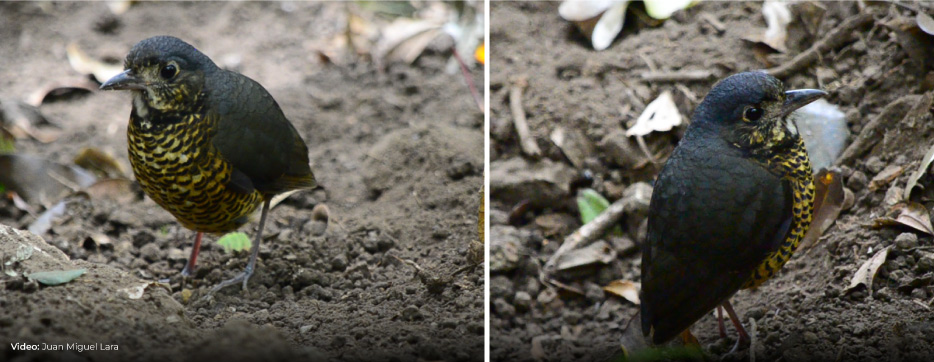
Community Engagement in Sierra Nevada de Santa Marta
In the vibrant heart of the Santa Marta region, Women for Conservation is sparking a revolution of empowerment and change within local communities like never before. Our tireless dedication to community work is not just about preserving wildlife; it’s about uniting rural women to become guardians of the endangered and endemic species that call the Sierra Nevada de Santa Marta region home. Through sustainable living opportunities and family planning, we’re empowering women to shape their own futures while safeguarding the precious biodiversity of their homeland.
This April marked a monumental milestone with our groundbreaking Family Planning Day in Palmor, where we didn’t just talk about family planning; we empowered women to take control of their bodies, paving the way for girls to chase their dreams without the burden of early pregnancies. And who could forget the electrifying energy of La Sierra es Mujer, our Women’s Entrepreneurship Fair in honor of International Women’s Day? This vibrant celebration of sustainable artisanal crafts and the historical contributions of women not only showcased the region’s rich heritage but also fostered economic growth and community unity.
Through our Environmental Education program, we’re nurturing the conservation leaders of tomorrow in local schools. The joy on the faces of Vista Nieves School’s 4th graders as we deliver new bird identification workbooks, teach them about protecting their local endemic species, and inspire them with field trips to El Dorado Nature Reserve, is truly unforgettable. Together, we’re not just saving species; we’re cultivating a brighter, more sustainable future for all and fostering a profound connection with Mother Nature.
New Bird Species Discovered in Our Conservation Area
We’re excited to share the news of documenting a new bird species, which is a huge win for our nature conservation efforts and partner communities. Women for Conservation helps support grassroots conservation projects in 14 partner communities near ProAves Nature Reserves, one of them being El Dorado Nature Reserve in the Sierra Nevada de Santa Marta mountain range along the Caribbean coast in Colombia. ProAves team member Nemesio Andres Gulfo discovered a mysterious huge antpitta – a thrush-like bird with powerful legs that appears tailless – that was feeding on the ground close to the El Dorado ProAves Reserve eco-lodge.
ProAves ornithologists rushed to the El Dorado Reserve and worked with Nemesio to identify the species. At first it appeared to be similar to the Undulated Antpitta (Grallaria squamigera)– a species found across the main Andean cordilleras of Colombia. Alternately, it was thought the species may be closely related to the geographically closer Great Antpitta (Grallaria excelsa). This species is endemic to the Merida mountains of Venezuela, which is also a subtropical forest similar to the Santa Marta Montane Forest, but is located over 400 km away. However, after intensive observations, song tape recordings, and the capture, measurement and release of an adult bird, the ProAves research team was able to confirm that Nemesio’s sighting represented a unique and distinctive new species of Antpitta for science!
Identifying the Bird
The newly documented isolated species in the El Dorado Reserve has a distinct gray head and an olive-colored back and wings. Its facial characteristics are particularly striking with a bright white “beard” and black collar. The bird’s vocalizations are especially interesting as they are very similar to another species in the reserve, meaning this species has likely been overlooked by the countless birdwatchers and ornithologists visiting El Dorado ProAves Reserve since 2005. Approximately 10,000 ornithologists and birdwatchers have visited the El Dorado ProAves Reserve and surrounding area in the past two decades and have never seen or heard of the species. In 2015, visitors Sophie Osborn and Chad Olson sighted a bird for a few minutes that they considered to be an Undulated Antpitta at the time, but only a distant blurred photograph was taken.

The research team composed of Nemesio Andres Gulfo, Alex Cortes, Juan Carlos Luna, Paul Salaman and Thomas Donegan aims to publish all the evidence in the coming year in collaboration with the University of Antioquia. The university is undertaking phylogenetic studies using blood taken from a captured bird that was released unharmed after the study. Even more astounding is that the new species was sighted in the former property called Vista Nieves of Melbourne Carriker, one of South America’s most famous bird collectors. He and his family lived on the property in the early 20th century and collected thousands of birds, but never this species.

This new documentation is a huge win for nature conservation, and it is very rare to document a new species of bird nowadays. In 2023, only three new species were documented. Colombia is the world’s #1 country for birds with over 1,979 bird species recorded and yet new species can still be found there; the last newly documented bird was the Chamí antpitta (Grallaria alvarezi) in 2020.
This exciting news further highlights the global importance of the 1,300 hectare El Dorado ProAves Reserve in conserving biodiversity. The reserve already protects over 20 endemic bird species and hundreds of other species of amphibians, orchids, reptiles in the subtropical and montane forests of the reserve and Sierra Nevada de Santa Marta.

Conserving the El Dorado Antpitta
Tragically, deforestation is accelerating in the cooler subtropical forests around the El Dorado ProAves Reserve and the Sierra Nevada because of a property boom to escape the increasing hot and dry coastal city of Santa Marta, attributed to climate change. This is pushing housing into the mountains where land prices have sky-rocketed, and, as a consequence, unprotected subtropical forests in the region are being sold and cleared (often without authorization) to make way for holiday homes and new farms.
This remarkable new documentation of El Dorado Antpitta should be a moment of triumph for Colombia. However, the populations appear to be small, so it we fear for its future survival. Protecting this newly discovered species recommits us to the importance of our nature conservation work in preserving Colombia’s endangered biodiversity.


